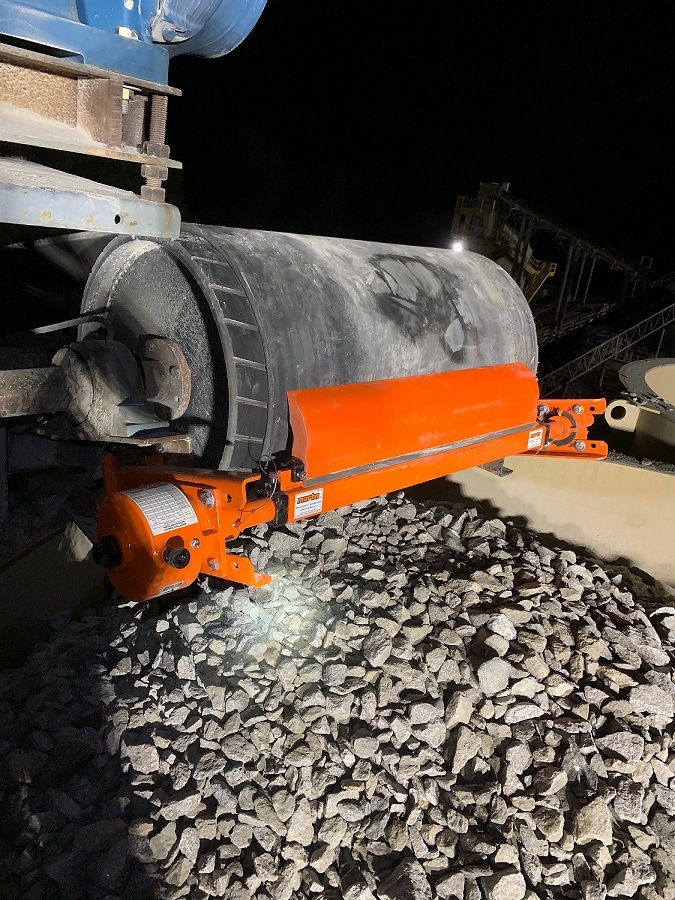December 18, 2019

This new conveyor belt cleaner has been designed with a method of holding the urethane blade in place without the need to mill any slots for holding pins.
Combining the benefits of previous designs into one product, the QC1+TM belt cleaner from Martin Engineering can be cut to length to fit virtually any application, reducing the need for customers to stock multiple blade sizes to accommodate different belt widths. Operators simply trim the blade to the desired size from the stock 9-ft length to match the material path, slide in the blade holders, and lock them in position. The new blade can be retrofitted to virtually any Martin main frame and most competing designs.
“In most belt cleaner designs, the blade is pinned in place, but this new approach uses a hole right in the aluminum extrusion to keep the blade firmly in position,” explained conveyor products manager Dave Mueller. “The biggest benefit to customers is the ability to buy long length blades and cut them to size without doing any machining. Most customers have a number of different belt widths, so in the past they’ve had to stock different blade sizes. But this design can accommodate a wide range of belts with a single product.”
Here are other mechanical conveying articles:
How Industry Expertise Ensures Correct Flexible Screw Conveyor Selection and Process Uptime
Tubular Conveying is Not So Obvious Until You Look Inside
4 Signs of Bucket Elevator Inefficiency
In some applications, existing cleaner designs are limited by the placement of the pin holes. In the case of a 36-in.-wide belt that has a material path of just 20 in., for example, there might be pin holes at 2, 6, and 8 in., with no holes for a 20-in. blade. The result would be the dreaded “smiley face” wear pattern, and the uneven blade wear shortened its service life.
“With this design, the blade holders slide and lock on a blade guide rail and are adjustable to whatever width is needed to match the material path,” Mueller said. “That contributes to better cleaning efficiency and longer blade life.”
The mainframes on the QC1+ are three-piece assemblies, with a square center section and a torque tube sliding into each end. The tubes are formed from high-strength steel and engage in the corners of the square main frame. They transmit the torque from the tensioner through the tubes and into the main frame to maintain blade tension.
The torque tube lock collars are designed to be an interference fit with the square mainframe. To assemble, the tube is installed first, then the collars are added and set in position. The length of the mainframe is adjusted next, and finally the set screws on the collars are tightened down. In most applications, the simple sequence can be performed by a single worker in just a few minutes. The new design is compatible with any of the Martin tensioning systems.
Martin Engineering, Neponset, IL 309-852-2384 www.martin-eng.com
You May Also Like


